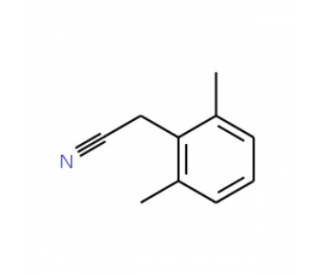详细说明
Species Reactivity
Human, Mouse
Specificity
Detects human and mouse Proinsulin in direct ELISAs. In direct ELISAs, no cross-reactivity with mature Insulin is observed.
Source
Monoclonal Mouse IgG 2A Clone # 253627
Purification
Protein A or G purified from hybridoma culture supernatant
Immunogen
E. coli-derived recombinant human Proinsulin
Phe25-Asn110
Accession # P01308Formulation
Lyophilized from a 0.2 μm filtered solution in PBS with BSA as a carrier protein.
Label
Biotin
Applications
Recommended
ConcentrationSample
Immunocytochemistry
8-25 µg/mL
See below
Intracellular Staining by Flow Cytometry
2.5 µg/10 6 cells
beta TC‑6 mouse beta cell insulinoma cell line fixed with paraformaldehyde and permeabilized with saponin
Please Note: Optimal dilutions should be determined by each laboratory for each application. are available in the Technical Information section on our website.
Data Examples
Immunocytochemistry | Proinsulin in beta TC‑6 Mouse Cell Line. Proinsulin was detected in immersion fixed beta TC‑6 mouse beta cell insulinoma cell line using Mouse Anti-Human/Mouse Proinsulin Biotinylated Monoclonal Antibody (Catalog # BAM13361) at 10 µg/mL for 3 hours at room temperature. Cells were stained using the NorthernLights™ 557-conjugated Streptavidin (red; Catalog # ) and counterstained with DAPI (blue). Specific staining was localized to cytoplasm. View our protocol for . |
Preparation and Storage
Reconstitution
Reconstitute at 0.5 mg/mL in sterile PBS.
Shipping
The product is shipped at ambient temperature. Upon receipt, store it immediately at the temperature recommended below.
Stability & Storage
Use a manual defrost freezer and avoid repeated freeze-thaw cycles.
12 months from date of receipt, -20 to -70 °C as supplied.
1 month, 2 to 8 °C under sterile conditions after reconstitution.
6 months, -20 to -70 °C under sterile conditions after reconstitution.
Background: Proinsulin
Proinsulin is synthesized as a single chain, 110 amino acid (aa) preproprecursor that contains a 24 aa signal sequence and an 86 aa proinsulin propeptide. Following removal of the signal peptide, the proinsulin peptide undergoes further proteolysis to generate mature insulin, a 51 aa disulfide-linked dimer that consists of a 30 aa B chain (aa 25‑54) bound to a 21 aa A chain (aa 90‑110). The 34 aa intervening peptide (aa 55‑89) that connects the B and A chains is termed the C-peptide. Human proinsulin shares 84% and 80% aa sequence identity with rat and bovine proinsulin, respectively. Most of the sequence variation between species occurs in the region of the C‑peptide (1). This peptide generates a structural conformation that allows for the correct formation of the intrachain disulphide bonds (1). Insulin is a molecule that facilitates the cellular uptake of glucose. This is accomplished by regulating the appearance of membrane glucose transporters. Low insulin levels or lack of insulin are associated with type 2 and type 1 diabetes mellitus, respectively. These conditions are associated with an increased risk for microvascular complications such as retinopathy, nephropathy, and peripheral neuropathy (3). Proinsulin also circulates, but its physiologic role is less well understood. It does possess about 25% of the activity of mature insulin, but it would seem unlikely to be a natural substitute for insulin (4). In type 2 diabetes, an elevated proinsulin to insulin ratio in the circulation is a well-known abnormality (5‑9). Perhaps this abnormality represents either compromised proteolytic processing or a general inability to process increased levels of insulin precursor (5). In any event, proinsulin will stimulate amylin secretion by beta ‑cells, and amyloid formation in pancreatic islets that promotes decreased beta cell function (10). Studies also suggest that fasting serum proinsulin may be a better predictor of future type 2 diabetes than fasting insulin levels in obese children (11).
References:
Bell, G.I. et al. (1980) Nature 284:26.
Barbetti, F. et al. (1990) J. Clin. Endocrinol. Metab. 71:164.
Forst, T. et al. (2008) Exp. Diabetes Res. 2008:176245.
Steffes, M.W. et al. (2003) Diabetes Care 26:832.
Roder, M.E. et al. (1999) Diabetes Care 22:609.
Porte, D. Jr. (1991) Diabetes 40:166.
Gordon, P. et al. (1974) Diabetologia 34:483.
Saad, M.F. et al. (1990) J. Clin. Endocrinol. Metab. 70:1247.
Roder, M.E. et al. (1995) J. Clin. Endocrinol. Metab. 80:2359.
Dworacka, M. et al. (2006) Int. J. Clin. Pharmacol. Ther. 44:14.
Kamoda, T. et al. (2006) Diabetes Obes. Metab. 8:192.
Entrez Gene IDs:
3630 (Human); 16333 (Mouse)
Alternate Names:
IDDM2; ILPR; insulin; IRDN; MODY10; Proinsulin











 粤公网安备44196802000105号
粤公网安备44196802000105号